26th August, 2025
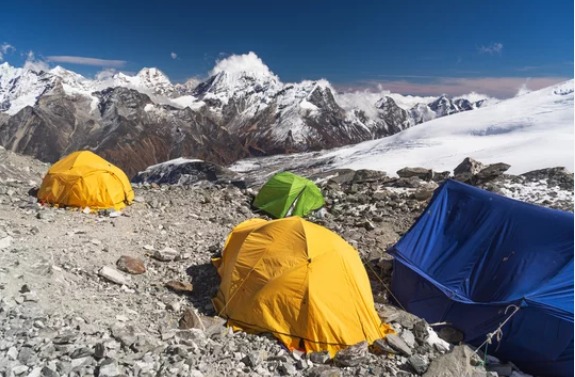
Mar 04, 2024
Mera Peak Climbing In July
- Mera Peak Climbing Permit and Cost
- Why Should You Climb Mera Peak in July
- Mera Peak Weather, Climate, and Temperature in July
- Advantages to Climb Mera Peak in July
- What Should I Pack for Mera Peak Climbing in July
- Why Is Mera Peak Cost Low In July
- Mera Peak Climbing Permit and Cost
- How Can We Choose the Best Expedition Company and Guide Like Sherpa Expedition
- Is Mera Peak Suitable for Beginner Climbers
- Who Can Provide Us with Training Before Summiting Mera Peak
- Why Choose Sherpa Expedition Guide for Summiting Mera Peak
- How Difficult to Climb Mera Peak in July
- Mera Peak Climbing Permit and Cost
- Why Sherpa Expedition Has Everyday Availability for Mera Peak Climbing
- Preparation and Safety About Mera Peak
- Altitude Sickness and Acclimatization
- Conclusion
- Mera Peak Climbing Packages
Climbing Mera Peak in July presents a unique adventure amidst Nepal's Himalayan wilderness, albeit with considerations for the monsoon season. Standing at 6,476 meters (21,246 feet), Mera Peak offers climbers a thrilling ascent and stunning panoramic views of Everest, Lhotse, Makalu, and other peaks in the Everest region.
July marks the peak of the monsoon in Nepal, characterized by frequent rainfall and cloudy conditions. While this typically means less predictable weather compared to the drier seasons, July still offers windows of clear skies and manageable weather patterns, especially earlier in the month. These clearer periods provide opportunities for climbers to enjoy breathtaking vistas and undertake the challenging ascent to Mera Peak's summit.
The lush greenery and blooming wildflowers add to the scenic beauty along the trekking route, creating a vibrant contrast against the snow-capped peaks and cascading waterfalls brought to life by the monsoon rains. The trail to Mera Peak Base Camp winds through picturesque Sherpa villages, dense rhododendron forests, and high-altitude landscapes, offering cultural insights and warm hospitality from local communities.
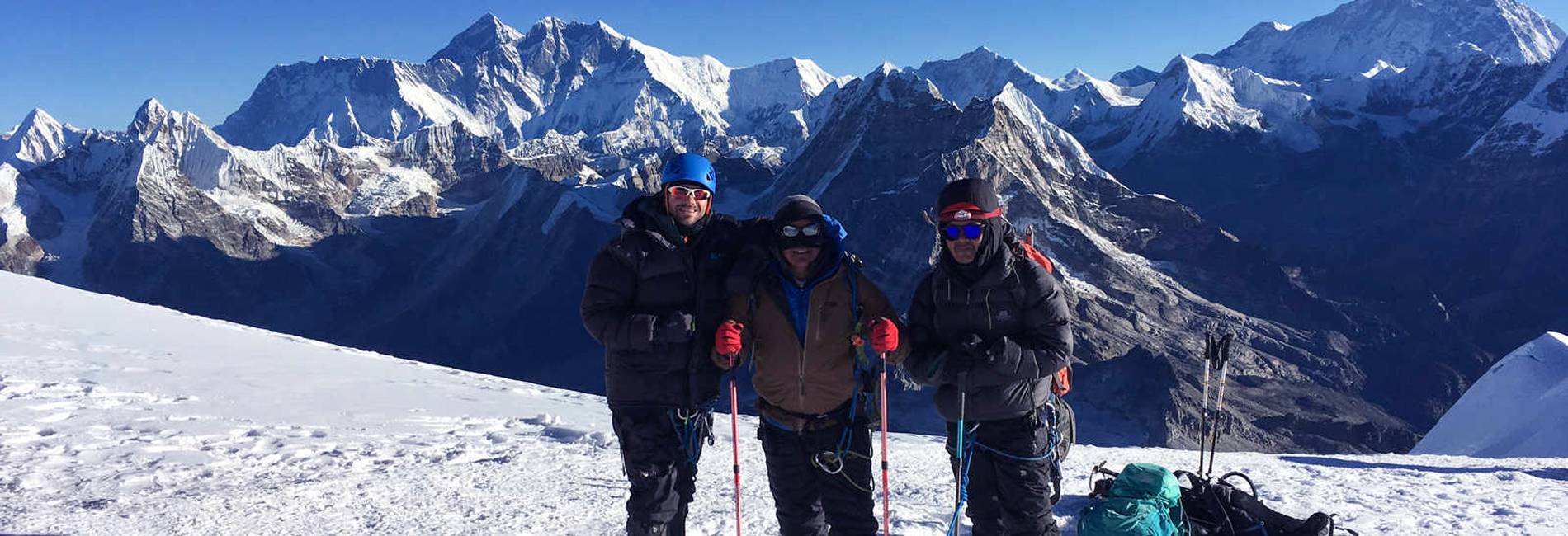
MERA PEAK CLIMBING
Mera Peak Climbing is an exhilarating adventure in Nepal that gives you an opportunity to reach the summit of Mera Peak at more than 6400m above sea level. Actually, it is the highest climbing (w...
Despite the weather variability, July can be a rewarding time to climb Mera Peak for those prepared for the conditions. It's essential to plan with experienced guides who understand the local terrain and weather patterns, ensuring safety and maximizing the chances of summit success during favorable weather windows.
Climbing Mera Peak in July requires careful consideration of gear, including waterproof clothing, sturdy trekking boots, and appropriate mountaineering equipment like crampons and ice axes. Adequate preparation, physical fitness, and a spirit of adventure are key to embracing the challenges and rewards of this Himalayan expedition in July.
Mera Peak Climbing Permit and Cost
Climbing Mera Peak requires obtaining permits from the Nepal Mountaineering Association (NMA). As of recent updates, the permit cost for Mera Peak is approximately USD 700 per person for foreign climbers. This fee covers peak fees, garbage deposits, and administrative charges. Additionally, trekkers need permits for Sagarmatha National Park and local area permits, which contribute to conservation efforts and support local communities. It's essential to obtain these permits through a registered trekking agency like Sherpa Expedition, ensuring compliance with regulations and responsible trekking practices.
Why Should You Climb Mera Peak in July
July offers a unique experience for climbing Mera Peak amidst Nepal's monsoon season. While the weather can be unpredictable with occasional rain and cloudy skies, July still provides opportunities for clear weather windows, especially earlier in the month. Climbing in July allows trekkers to witness lush green landscapes, blooming wildflowers, and vibrant vegetation along the trail, enhanced by the rejuvenating monsoon rains. The quieter trails compared to peak seasons offer a more serene trekking experience, with fewer climbers on the route. For adventurers seeking a challenge amidst verdant scenery and cultural immersion in Sherpa villages, July presents a rewarding opportunity to summit Mera Peak.

MERA PEAK EXPEDITION 14 DAYS
The Mera Peak Expedition is a 14-day trek that offers a unique and challenging route to the summit of Mera Peak. The Upper Route is a less-traveled path that takes you through some of the most remote...
Mera Peak Weather, Climate, and Temperature in July
July brings the peak of the monsoon season to Nepal, affecting weather conditions on Mera Peak. The region experiences frequent rainfall and cloudy skies, which can reduce visibility and create muddy trails. Daytime temperatures at lower elevations range from mild to warm, while nights are generally cooler. At higher altitudes, temperatures can drop significantly, requiring adequate insulation and warm clothing for comfort and safety. Despite the rain, July also offers occasional clear spells, providing windows of opportunity for summiting Mera Peak and enjoying panoramic views of the Himalayan peaks. It's essential to be prepared for variable weather conditions and to plan the climb with experienced guides who understand local weather patterns and can adjust the itinerary accordingly.
Advantages to Climb Mera Peak in July
Climbing Mera Peak in July offers several advantages for adventurous trekkers. The lush greenery and blooming flora create a picturesque backdrop along the trekking route, enhancing the scenic beauty of the journey. With fewer climbers on the trail compared to peak seasons, July provides a quieter and more intimate trekking experience, allowing for deeper immersion in the natural surroundings and local culture. Despite the monsoon rains, clear weather windows can still occur, offering opportunities to summit Mera Peak and enjoy breathtaking views of Everest, Lhotse, and Makalu. July also allows climbers to experience the vibrant Sherpa culture firsthand, visiting traditional villages and monasteries along the way. Overall, climbing Mera Peak in July combines adventure with natural beauty, making it a memorable and rewarding Himalayan expedition.

MERA PEAK CLIMBING 17 DAYS
This is an excellent opportunity to climb Nepal’s highest peak without having to obtain a permit (6,476m/21,190ft). From the summit, you will have stunning views of several 8000m plus peaks, such as E...
What Should I Pack for Mera Peak Climbing in July
Packing for Mera Peak climbing in July requires careful consideration due to the monsoon season's variable weather conditions. Essential items include waterproof and windproof outer layers, insulated clothing for warmth, and quick-drying base layers. Sturdy trekking boots with good grip are essential for navigating muddy and slippery trails. Pack a warm sleeping bag suitable for sub-zero temperatures at higher altitudes and a quality backpack for carrying gear. Sun protection such as sunscreen, sunglasses, and a wide-brimmed hat is crucial, along with a headlamp and spare batteries for early morning starts and evening hikes. A comprehensive first aid kit should include altitude sickness medication and personal medications. Energy snacks and hydration supplies are essential for maintaining energy levels on the trail. Packing smartly ensures you're prepared for the challenges and beauty of Mera Peak climbing in July.
Why Is Mera Peak Cost Low In July
The cost of climbing Mera Peak is lower in July primarily due to lower demand during the monsoon season. July falls within the off-peak period for trekking and climbing in Nepal, as many climbers prefer drier months for better weather conditions. With fewer climbers on the trail, trekking agencies may offer competitive pricing and discounts to attract adventurers looking to summit Mera Peak during the monsoon. Lower costs can also reflect reduced accommodation and transportation rates during the offseason. Despite the potential for rain and cloudy skies, July still presents opportunities for clear weather windows and rewarding climbing experiences. Choosing to climb Mera Peak in July not only offers cost savings but also a quieter and more serene journey through Nepal's stunning Himalayan landscape.
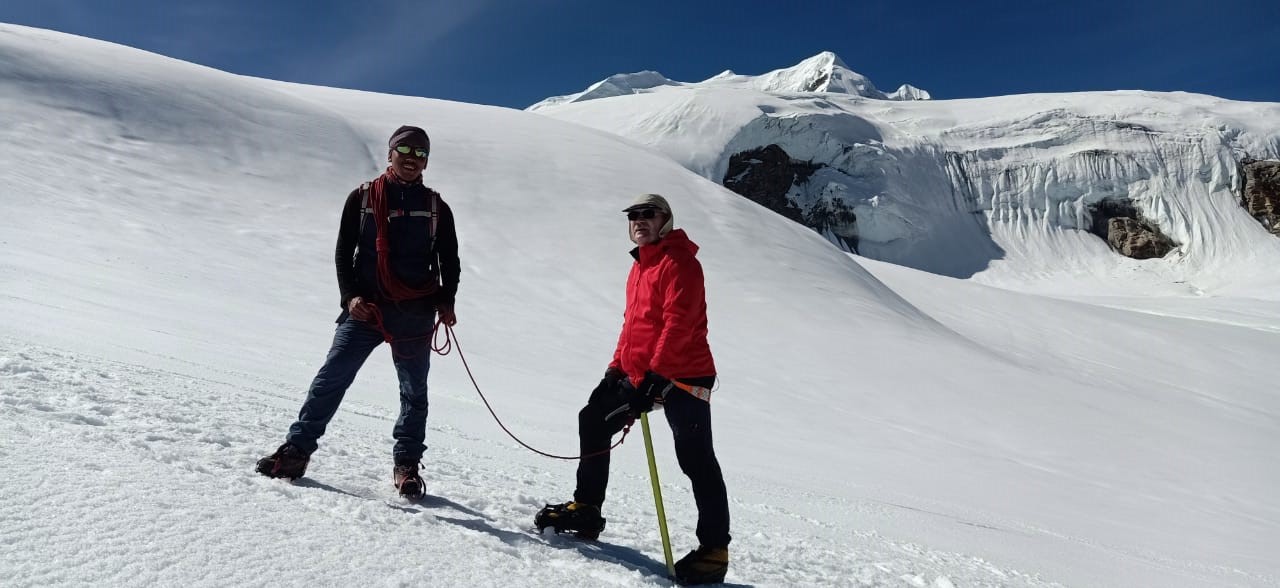
Mera Peak Climbing 20 Days
This is a chance to go climbing without the necessary permits that most climbing expeditions require in Nepal. Mera Peak fits the bill perfectly and at (6,476m/21,190ft) you will have spectacular view...
Mera Peak Climbing Permit and Cost
Climbing Mera Peak involves obtaining permits from the Nepal Mountaineering Association (NMA). As of recent information, the permit cost for Mera Peak is approximately USD 700 per person for foreign climbers. This fee covers peak fees, garbage deposits, and administrative charges. Additionally, trekkers need permits for Sagarmatha National Park and local area permits, which contribute to conservation efforts and support local communities. It's crucial to obtain these permits through a reputable trekking agency such as Sherpa Expedition to ensure compliance with regulations and responsible trekking practices.
How Can We Choose the Best Expedition Company and Guide Like Sherpa Expedition
Choosing the best expedition company and guide for climbing Mera Peak requires thorough research and consideration of several factors. Look for companies with a strong reputation and extensive experience organizing Himalayan expeditions, particularly climbing Mera Peak. Read reviews and testimonials from previous climbers to gauge their satisfaction and safety record.
Ensure the expedition company employs certified and experienced guides who are familiar with the terrain, weather conditions, and cultural aspects of the region. A good guide can enhance your experience by providing expert knowledge, ensuring safety protocols are followed, and offering support throughout the expedition.
Consider the services offered by the expedition company, including transportation, accommodation, meals, permits, and emergency evacuation plans. Clear communication regarding itinerary, costs, and inclusions is essential to avoid misunderstandings.
Sherpa Expedition stands out for its expertise in organizing climbs like Mera Peak. Their Sherpa guides bring invaluable local knowledge and cultural insights, enhancing your trekking experience while prioritizing safety and sustainability. Choosing a reputable company like Sherpa Expedition ensures a memorable and successful ascent of Mera Peak.

MERA PEAK SUMMIT 10 DAYS
This is a chance to go climbing without the necessary permits that most climbing expeditions require in Nepal. Mera Peak fits the bill perfectly and at (6,476m/21,190ft) you will have spectacular view...
Is Mera Peak Suitable for Beginner Climbers
Mera Peak is considered one of Nepal's more accessible trekking peaks, making it suitable for novice climbers with proper preparation and guidance. While previous trekking experience at altitude is beneficial, technical climbing skills are not mandatory for the standard route. However, climbers should be physically fit and prepared for long days of trekking at high altitude, which can be physically demanding.
The climb involves walking on snow and glacier terrain, requiring the use of crampons, ice axes, and ropes. Basic mountaineering skills and familiarity with this equipment are necessary, although they can be learned during the expedition with guidance from experienced Sherpa guides.
Overall, while Mera Peak is achievable for beginners with adequate preparation and guidance, it's important to assess your fitness level and comfort with high-altitude trekking and basic mountaineering techniques before embarking on this adventure.
Who Can Provide Us with Training Before Summiting Mera Peak
Before summiting Mera Peak, it's advisable to undergo training to prepare physically and mentally for the challenges of high-altitude trekking and basic mountaineering. Several options are available for training:
Local Trekking Agencies: Many trekking agencies in Kathmandu and Lukla offer pre-climb training programs that cover essential skills such as using crampons, ice axes, and rope techniques.
Mountaineering Schools: Consider enrolling in a mountaineering course offered by reputable schools in your home country or in Nepal. These courses provide comprehensive training in mountaineering skills, safety protocols, and acclimatization strategies.
Guides and Sherpas: Experienced Sherpa guides accompanying you on the expedition often provide on-the-spot training during the climb itself. They will teach you how to use climbing equipment effectively and safely navigate the mountain terrain.
Training should include physical conditioning through aerobic exercises, strength training, and hiking with a loaded backpack to simulate the conditions you'll encounter on Mera Peak. Acclimatization strategies are also crucial to minimize the risk of altitude sickness and ensure a successful summit attempt.

MERA PEAK CLIMBING 15 DAYS
The Mera Peak Expedition is a 15-day trek that takes you through some of the most stunning landscapes and challenging trails in Nepal. Mera Peak is the highest trekking peak in Nepal, standing at 6,47...
Why Choose Sherpa Expedition Guide for Summiting Mera Peak
Choosing Sherpa Expedition for summiting Mera Peak ensures you benefit from their extensive experience, local knowledge, and commitment to safety and sustainability. Sherpa guides are renowned for their expertise in Himalayan climbing and deep cultural understanding, enriching your trekking experience with insights into local customs and traditions.
Sherpa Expedition employs certified guides who have undergone rigorous training and are familiar with the terrain, weather patterns, and altitude challenges of Mera Peak. They prioritize safety at all times, ensuring proper acclimatization, monitoring health conditions, and providing emergency support if needed.
Additionally, Sherpa Expedition offers comprehensive services including transportation, permits, accommodation, meals, and equipment rental, streamlining your expedition logistics and allowing you to focus on enjoying the journey. Their personalized approach and dedication to client satisfaction make them a trusted choice for climbers seeking a memorable and successful summit of Mera Peak.
How Difficult to Climb Mera Peak in July
Climbing Mera Peak in July presents additional challenges due to the monsoon season in Nepal. The weather can be unpredictable with frequent rain showers and cloudy conditions, which may reduce visibility and make trekking trails muddy and slippery. However, July still offers windows of clearer weather and lower temperatures compared to the peak summer months.
The ascent involves navigating snow and glacier terrain, requiring the use of crampons, ice axes, and ropes. Climbers must be prepared for colder temperatures at higher altitudes and potential exposure to inclement weather. Proper gear and clothing are essential to stay warm, dry, and comfortable throughout the climb.
Despite the challenges, climbing Mera Peak in July can be rewarding for those prepared for variable weather conditions and seeking a quieter trekking experience. With careful planning, experienced guides, and flexibility in itinerary, climbers can still enjoy stunning views and achieve a successful summit of Mera Peak during this off-peak season.
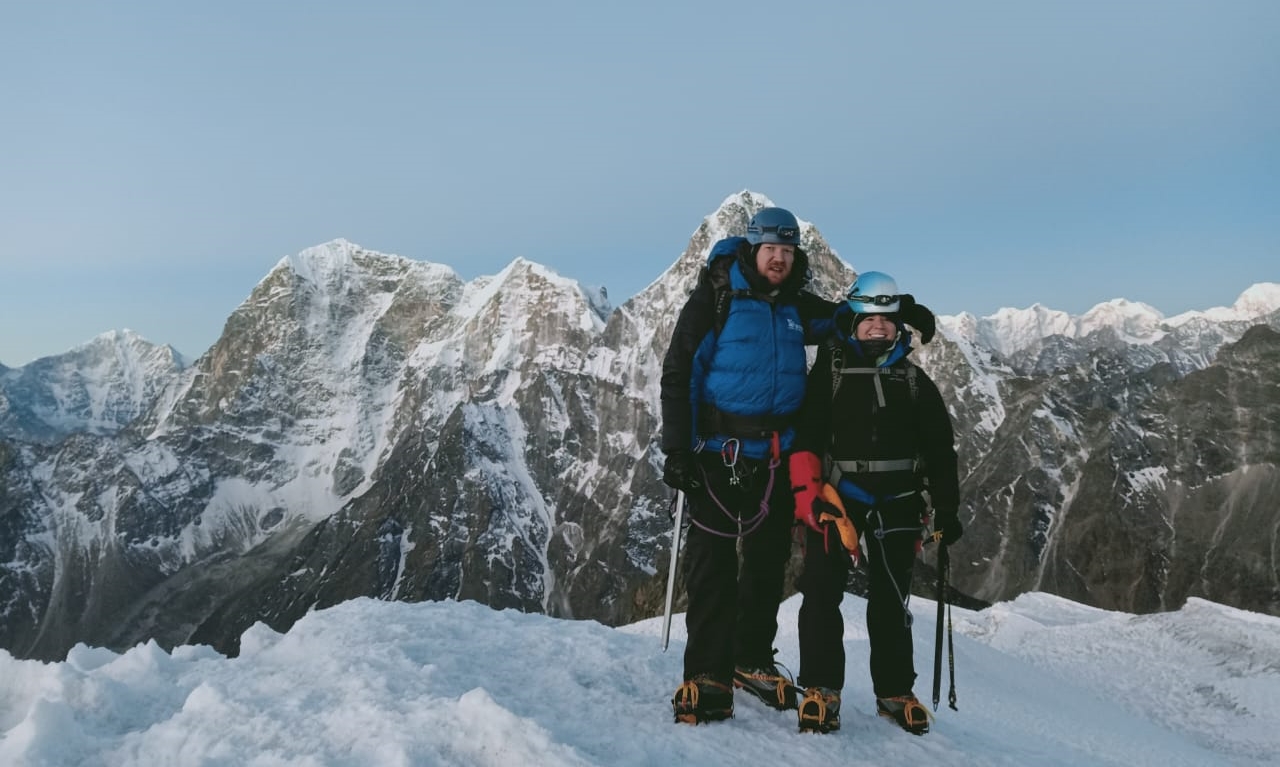
LOBUCHE PEAK CLIMBING
Lobuche East (6,119m/20,075ft), set in Nepal's stunning Khumbu on the Nepalese side of Everest.The best time to go trekking in Nepal is in Autumn (September-November) and in...
Mera Peak Climbing Permit and Cost
Climbing Mera Peak requires obtaining several permits, primarily from the Nepal Mountaineering Association (NMA). As of recent updates, the permit cost for Mera Peak is approximately USD 700 per person for foreign climbers. This fee covers peak fees, garbage deposits, and administrative charges. Additionally, trekkers need permits for Sagarmatha National Park and local area permits, contributing to environmental conservation efforts and supporting local communities. It's essential to secure these permits through a reputable trekking agency like Sherpa Expedition to ensure compliance with regulations and responsible trekking practices.
Why Sherpa Expedition Has Everyday Availability for Mera Peak Climbing
Sherpa Expedition maintains everyday availability for Mera Peak climbing due to their extensive experience, robust logistics, and flexibility in scheduling. They operate multiple expeditions throughout the climbing season, accommodating varying trekker preferences and weather conditions. Their seasoned Sherpa guides possess intimate knowledge of Mera Peak's terrain and local conditions, enabling them to adjust quickly to weather changes and ensure safety. Sherpa Expedition prioritizes client satisfaction by offering personalized itineraries, thorough acclimatization schedules, and comprehensive support during the ascent. Their commitment to excellence and safety allows them to offer reliable availability and successful summit opportunities for climbers of all skill levels.
Preparation and Safety About Mera Peak
Preparation for Mera Peak involves thorough physical conditioning, mental readiness, and understanding the challenges associated with high-altitude trekking and climbing. Sherpa Expedition emphasizes safety with detailed briefings, equipment checks, and personalized training in mountaineering techniques. They provide essential gear such as crampons, ice axes, and ropes, ensuring climbers are equipped for snow and glacier terrain. Sherpa Expedition's experienced guides monitor climbers' health, implement effective acclimatization strategies, and offer support to manage altitude sickness symptoms. Their comprehensive approach to safety and preparation ensures a successful and memorable expedition to Mera Peak while prioritizing the well-being of all climbers.

ISLAND PEAK CLIMBING
Sherpa Expedition & Trekking (Est.1977) are pleased to announce FOR ADVENTURERS the most awesome, exhilarating & unforgettable climbing and treks on offer anywhere today!...
Altitude Sickness and Acclimatization
Altitude sickness, including symptoms like headaches, nausea, and dizziness, poses a significant risk when climbing Mera Peak due to its high altitude. Sherpa Expedition emphasizes acclimatization by incorporating gradual ascent and rest days into their itineraries. This allows climbers to adapt slowly to higher altitudes, minimizing the risk of AMS (Acute Mountain Sickness) and ensuring a safer ascent. Guides closely monitor climbers' health, provide guidance on hydration, nutrition, and recognizing symptoms, and are trained to respond to medical emergencies promptly. Sherpa Expedition's commitment to proper acclimatization and altitude safety enhances climbers' chances of summit success while prioritizing their health and well-being throughout the expedition.
Conclusion
Climbing Mera Peak with Sherpa Expedition offers adventurers a challenging yet rewarding experience in the heart of the Himalayas. From navigating permit requirements to ensuring thorough preparation and safety protocols, Sherpa Expedition demonstrates expertise and dedication in organizing successful climbs. Their everyday availability, meticulous planning, and experienced guides ensure optimal conditions for summiting Mera Peak, coupled with immersive cultural experiences and stunning mountain vistas. Whether you're a seasoned climber or embarking on your first Himalayan expedition, Sherpa Expedition provides the support, knowledge, and safety measures needed for a memorable and safe ascent of Mera Peak.
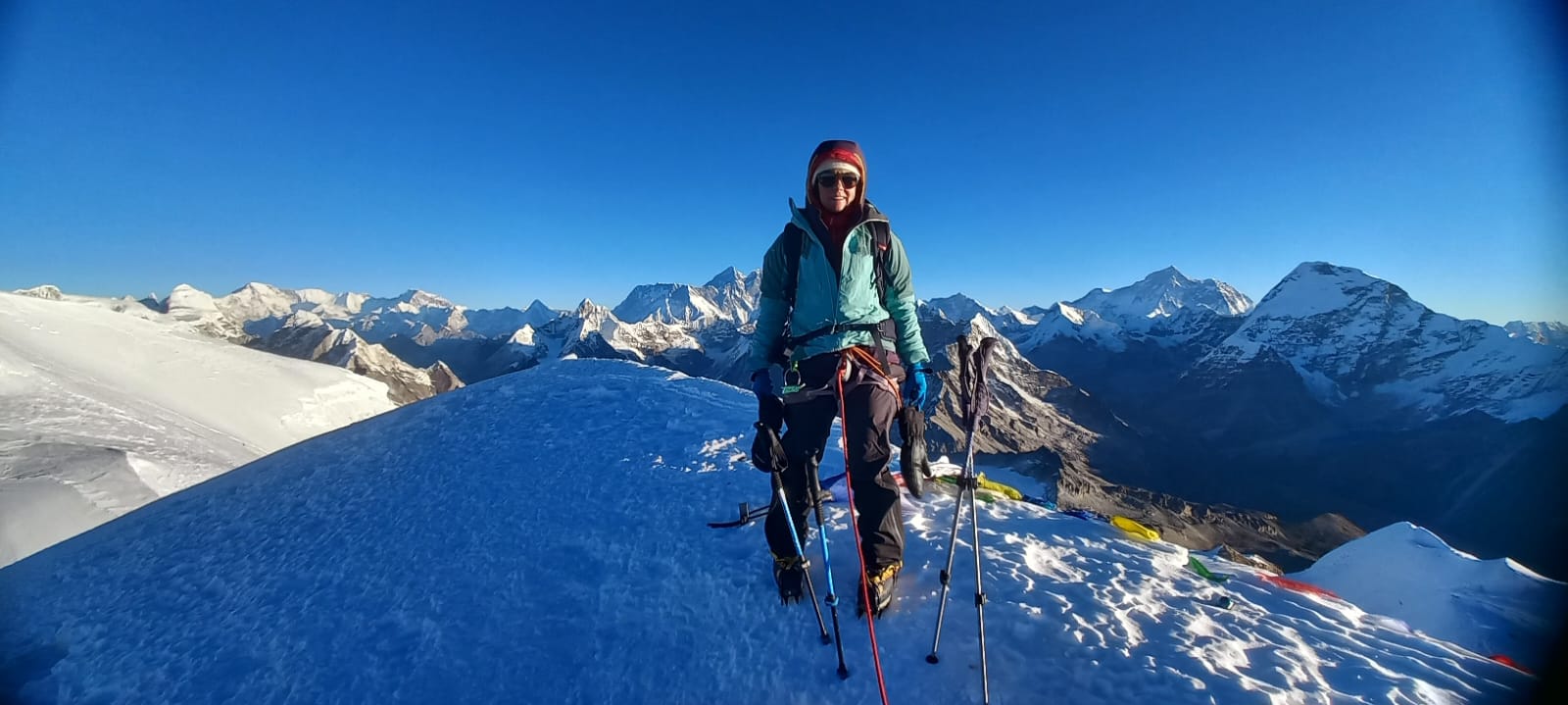
Three Peak Expedition
Embark on an unforgettable journey to the heart of the Himalayas as you conquer three majestic peaks: Mera Peak, Island Peak, and Lobuche Peak. This ultimate adventure combines technical climbing, bre...
Mera Peak Climbing Packages
Mera Peak Summit Return By Helicopter
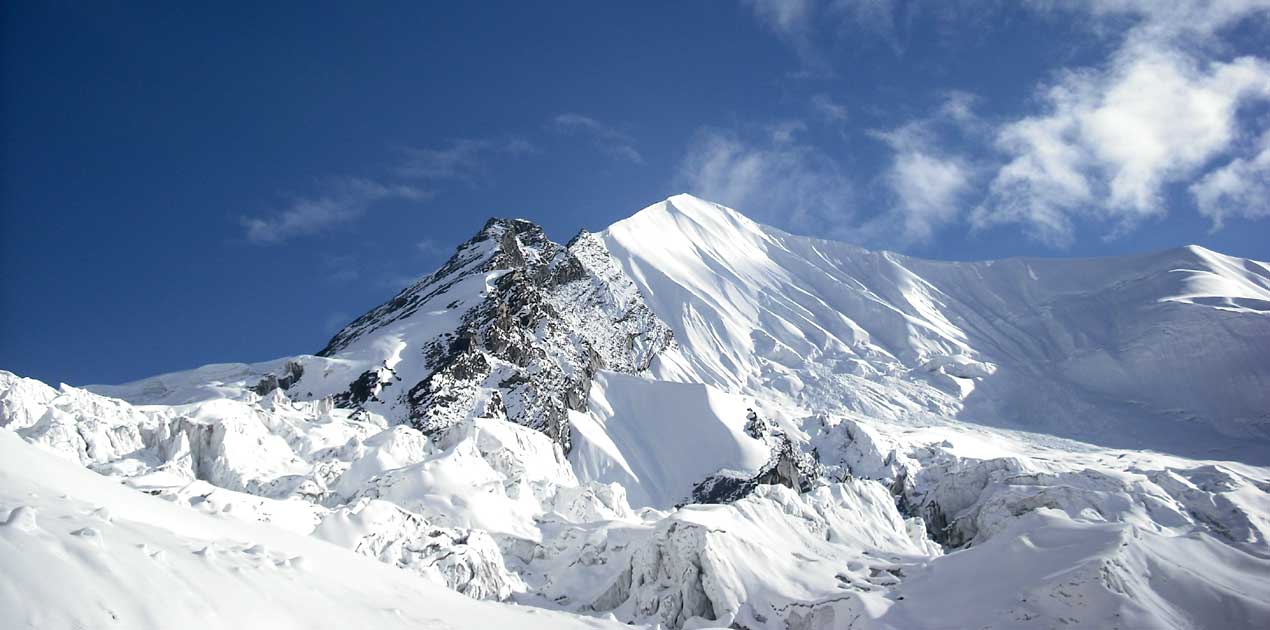
PACHERMO PEAK CLIMBING
Believe in yourself! You have what it takes to summit this beautiful peak in the remote Rolwaling district in the northeast of Nepal – near the Tibetan border. It is physically demanding, but with som...
Any Questions? Let Us Know.
Recent Posts
17th June, 2025


















